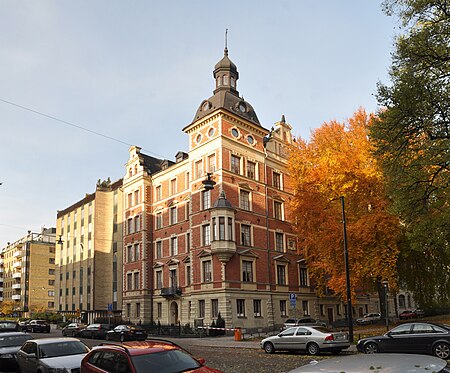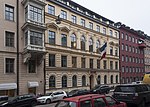Stureparken
Parks in StockholmStockholm County geography stubs

Stureparken is a small park in the borough of Östermalm in Stockholm, Sweden. The park is situated at the corner of Östermalmsgatan / Sturegatan. The park began construction in 1906. Stureparken is surrounded by several architecturally interesting buildings. Included are the residential buildings Björken 18 which was designed by architect Fredrik Dahlberg and built between 1885-1886 and Rosenborgshuset which was designed by Ferdinand Boberg and built between 1883–1884.
Excerpt from the Wikipedia article Stureparken (License: CC BY-SA 3.0, Authors, Images).Stureparken
Sturegatan, Stockholm Östermalm (Östermalms stadsdelsområde)
Geographical coordinates (GPS) Address Phone number Website Nearby Places Show on map
Geographical coordinates (GPS)
| Latitude | Longitude |
|---|---|
| N 59.342402777778 ° | E 18.077380555556 ° |
Address
Proviant
Sturegatan
114 36 Stockholm, Östermalm (Östermalms stadsdelsområde)
Sweden
Open on Google Maps











